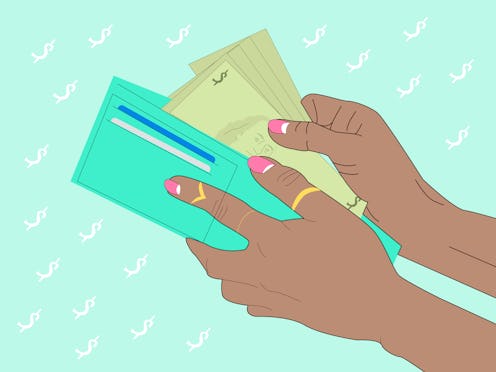
It's Equal Pay Day, which brings awareness to the fact that women make 78 percent of what men make in the United States. But that's just on average. If you look at different subgroups of women, it becomes apparent that there are many factors the make the wage gap worse. Some women make as much as or even more than their male counterparts, whereas others make less by an even greater margin than average.
When discussing any feminist issue, it's important to consider intersectionality — the way that factors like race, class, sexuality, age, and disability affect some people's experience of sexism. Otherwise, we risk focusing on problems that disproportionately affect privileged women. The wage gap is no exception to this rule: It hurts women across the board, but particular groups are even more vulnerable.
When you look at the factors that make the pay gap worse, it also becomes clear that women's advancement isn't going to solve the problem. Often, women in the highest, most stable positions experience a wage gap equal to or greater than those in lower positions. Rather than simply urging women to negotiate and persevere, we need to change the system.
Here are several factors that can make the wage gap even worse for certain women.
1. Motherhood
A 2014 study by the National Partnership for Women and Children found that working mothers make 71 percent of what working fathers make. U.S. Census Bureau data indicate that overall, women made 79 percent of what men made that year. This means women are penalized for being moms. On top of this, several experts told NBC, many women experience workplace discrimination because they're pregnant or others believe that they could become pregnant.
2. Race
According to U.S. Bureau of Labor statistics, Latina women make 61 percent of what white men make, and black women make 68 percent. Black and Hispanic people make less money across the board regardless of gender.
3. Disability
According to the U.S. Census Bureau, people with disabilities make about three quarters of what people without disabilities make. Over half of people with disabilities earned less than $25,000 in 2012, and people with disabilities were three times more likely to be unemployed than those without disabilities.
4. Career Advancement
You might think the way to achieve equal pay would be to advance your career, but several studies suggest that the wage gap is the worst at the top. A recent study from the Graduate Management Admission Council found that, among women with MBAs, those in entry-level jobs make 85 percent of what men do, while those in executive roles make 80 percent. And a report released today from the job-searching site Hired found that women at tech companies receive three percent less than men on average, but the one exception is those with two or fewer years of experience, who actually receive seven percent more. Women with six years or more of experience had the lowest salary expectations compared to men.
5. Age
According to 2014 Bureau of Labor statistics, women 35 and over earn only 76 and 81 percent of what men do, while younger women earn more like 90-92 percent. This could be because ageism at work affects women disproportionately.
6. Full-Time, Salaried Status
Bureau of Labor statistics show that the wage gap is smaller for those working part-time and those paid by the hour, which suggests that the supposedly most stable jobs — full-time, salaried positions — actually put women at a disadvantage. Regardless of gender, part-time positions pay less overall and there are far more women in them, so it seems most women are likely to make less no matter what type of contract they have. Again, the goal should not be to change women's career choices but to change the system.
Image: Liz Minch/Bustle